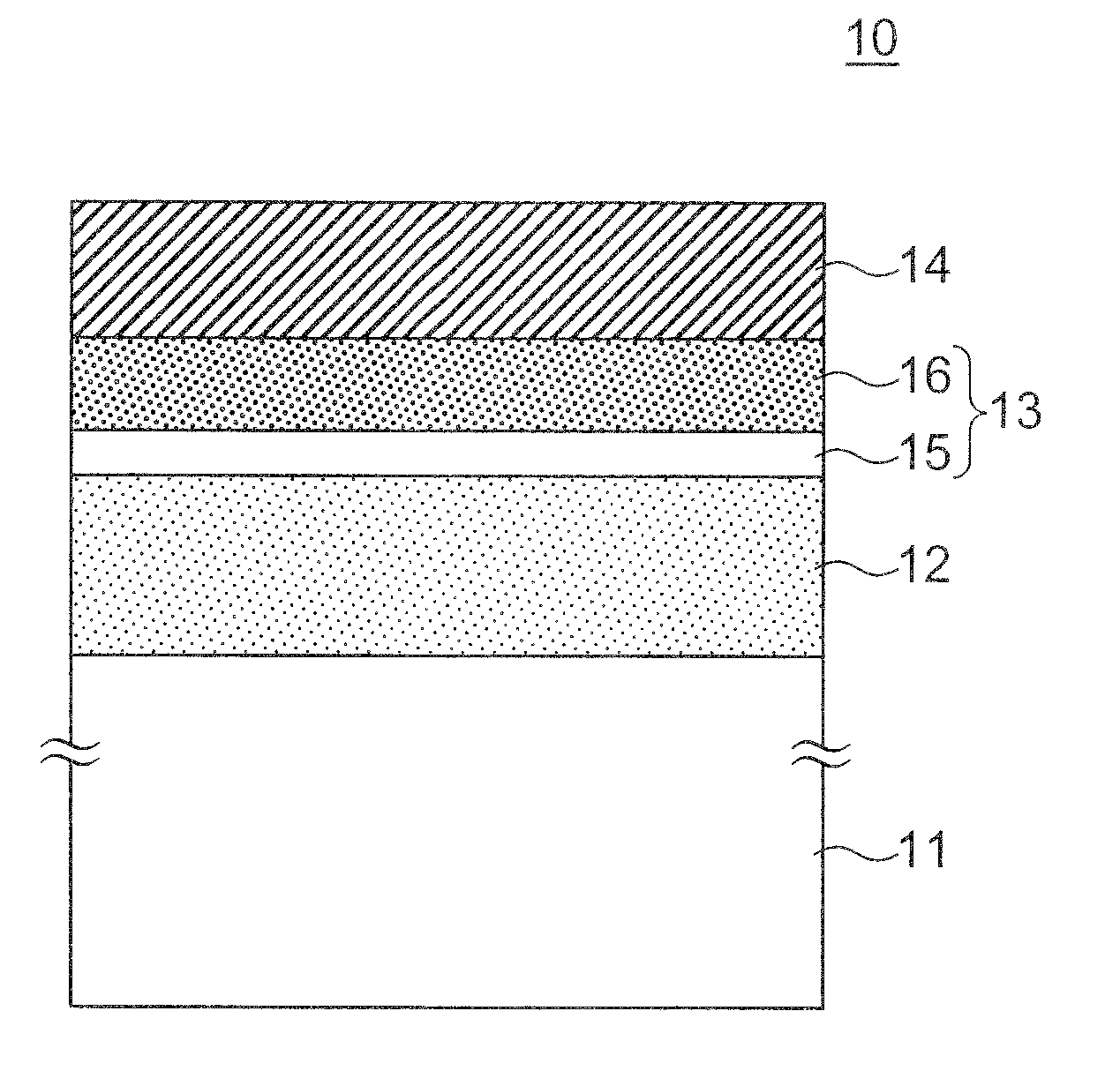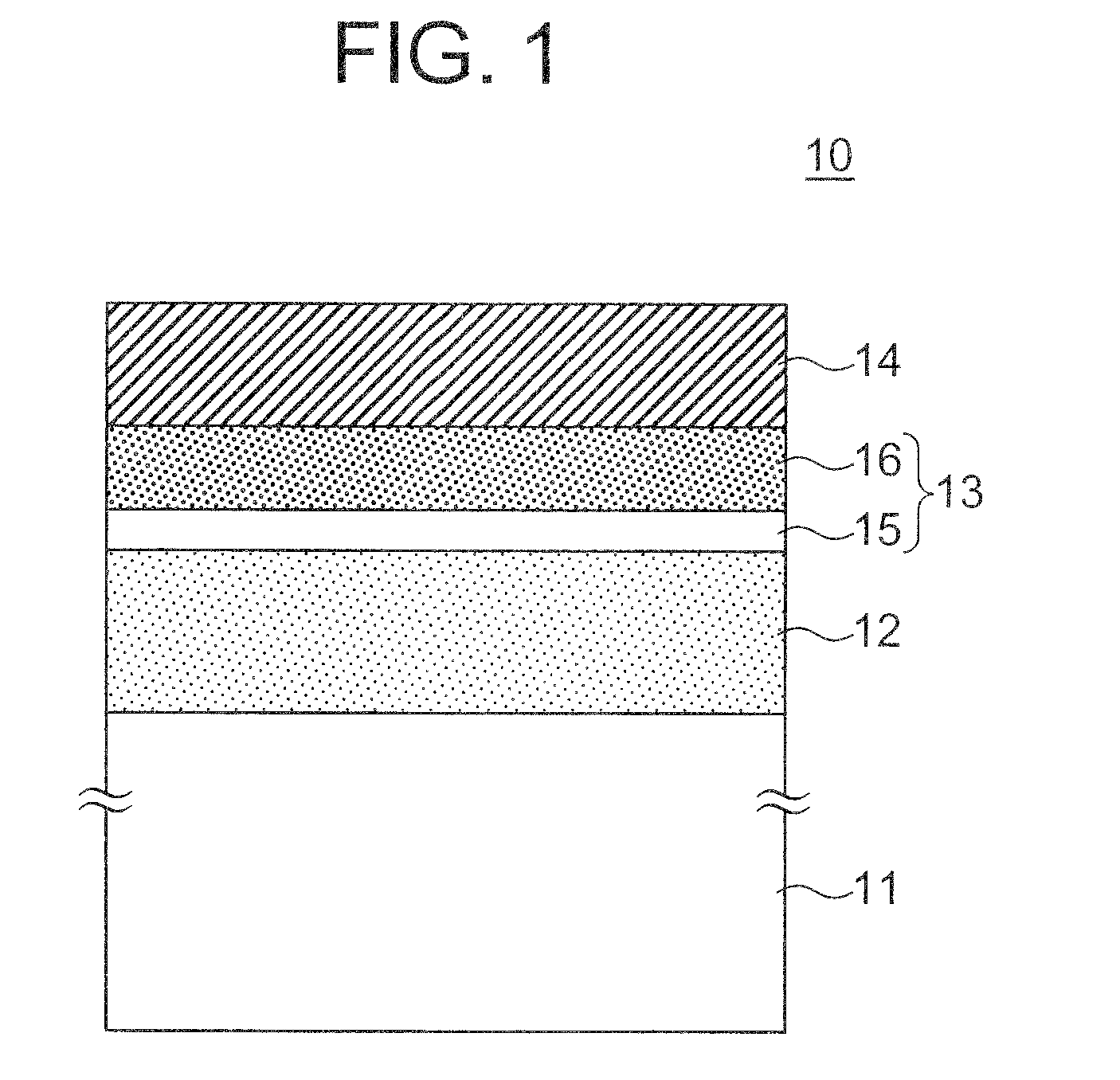Method for manufacturing a semiconductor device including a stacked capacitor
a technology of stacked capacitors and semiconductor devices, which is applied in the direction of capacitors, basic electric elements, electrical appliances, etc., can solve the problems of preventing the improvement of capacitor insulation films for achieving higher capacitance, and achieves the effects of reducing leakage current, improving controllability of thickness, and reducing manufacturing costs
- Summary
- Abstract
- Description
- Claims
- Application Information
AI Technical Summary
Benefits of technology
Problems solved by technology
Method used
Image
Examples
Embodiment Construction
[0017] Now, an exemplary embodiment of the present invention will be described with reference to accompanying drawings. FIG. 1 schematically shows the structure of a capacitor in a semiconductor device manufactured by a method according to an embodiment of the present invention. The semiconductor device 10 is a configured as a DRAM device, for example, and includes an array of memory cells each including a MOSFET (not shown) formed in an underlying structure 11 and a capacitor depicted in the figure.
[0018] The capacitor includes a bottom electrode 12, a capacitor insulation film 13, and a top electrode 14. The bottom electrode 12 is configured by a polysilicon film heavily-doped with phosphor. The capacitor insulation film 13 has a two-layer structure including a 2-nm-thick silicon oxynitride (SiON) film 15 and an overlying 9-n-thick tantalum oxide (Ta2O5) film 16. Although not illustrated, the bottom electrode 12 has a hemispherical grained structure including a plurality of hemis...
PUM
| Property | Measurement | Unit |
|---|---|---|
| pressure | aaaaa | aaaaa |
| temperature | aaaaa | aaaaa |
| area | aaaaa | aaaaa |
Abstract
Description
Claims
Application Information
 Login to View More
Login to View More - R&D
- Intellectual Property
- Life Sciences
- Materials
- Tech Scout
- Unparalleled Data Quality
- Higher Quality Content
- 60% Fewer Hallucinations
Browse by: Latest US Patents, China's latest patents, Technical Efficacy Thesaurus, Application Domain, Technology Topic, Popular Technical Reports.
© 2025 PatSnap. All rights reserved.Legal|Privacy policy|Modern Slavery Act Transparency Statement|Sitemap|About US| Contact US: help@patsnap.com



